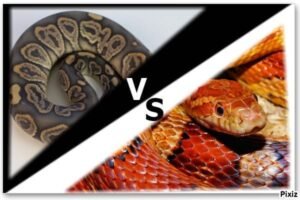Rat Snakes | Characteristics, 40 Types, Behaviour, Facts, Care Tips
Curious about rat snakes? These enigmatic reptiles play a crucial role in ecosystems while intriguing snake enthusiasts worldwide. In this guide, we delve into the captivating realm of rat snakes, uncovering their diverse species, behaviours, care tips, and much more. Whether you’re a budding herpetologist or simply intrigued by the world of serpents, join us on a journey to discover the wonders of rat snakes. From their role in rodent control to their captivating appearances, this guide is your key to unraveling the mysteries of these remarkable creatures.
Rat Snake
Appearance and Diversity: Rat snakes come in an astonishing range of appearances, sporting colours that span from earthy browns and greens to vibrant reds and yellows. Their patterns can be anything from stripes and blotches to speckles, providing them with effective camouflage in their respective habitats. These variations make identification a thrilling challenge for snake enthusiasts and naturalists.
Habitat and Distribution: These adaptable snakes have managed to carve out niches in a variety of environments, including forests, grasslands, and even urban areas. Rat snakes are often encountered near human habitations due to their affinity for hunting rodents – a behaviour that has earned them their common name. From the woodlands of North America to the rice fields of Asia, these reptiles have established themselves as masters of adaptation.
Behaviour and Diet: Rat snakes are renowned for their remarkable climbing abilities, which they use to track down their preferred prey: rodents. While they mainly feed on rats and mice, their diet can also include birds and their eggs, frogs, and even small bats. As constrictors, they use their lithe bodies to capture and subdue their prey before consumption, relying on sheer strength and agility rather than venom.
Importance in Ecosystem: Though often feared and misunderstood, rat snakes play a crucial role in maintaining ecological balance. By keeping rodent populations in check, they help control potential disease vectors and prevent crop damage. Additionally, they serve as prey for various predators, contributing to the intricate web of life in their habitats.
Conservation and Protection: Despite their benefits, rat snakes face threats from habitat loss, accidental killings, and illegal pet trade. It’s essential to recognize their significance and take measures to protect these valuable creatures. Encouraging education and raising awareness about the role they play in the ecosystem can go a long way in safeguarding their future.
Baby Rat Snake
Baby rat snakes, often referred to as hatchlings, are the juvenile members of rat snake species. These young serpents bear a resemblance to their adult counterparts, displaying a range of colours and patterns. As they grow, they shed their skin in a process known as molting. The appearance of baby rat snakes may vary depending on the specific species, but they commonly share the defining traits that make rat snakes unique.
Texas Rat Snake
The Texas rat snake, scientifically known as Elaphe obsoleta lindheimeri, is a non-venomous reptile that is prevalent in the state of Texas and surrounding regions. Known for its adaptable nature, the Texas rat snake thrives in diverse environments ranging from forests and grasslands to urban areas. It showcases a distinct pattern of scales with colours that vary from shades of gray and brown to sometimes even yellow. As efficient climbers, they often traverse trees and structures in search of prey, making them valuable for rodent control.

Cottonmouth Texas Rat Snake
The cottonmouth Texas rat snakes, sometimes confused with the venomous cottonmouth snake, is a non-venomous species inhabiting the southeastern United States. This snake, scientifically named Elaphe guttata emoryi, is notable for its striking appearance and its preference for semi-aquatic habitats. Its name “cottonmouth” refers to its habit of opening its mouth wide when threatened, resembling the behaviour of the venomous cottonmouth snake. However, it’s important to note that the cottonmouth Texas rat snake is harmless to humans. With its unique blend of colours and patterns, it contributes to the biodiversity of its region.

Eastern Rat Snake
The eastern rat snakes, scientifically known as Pantherophis alleghaniensis, is a non-venomous species native to the eastern United States. These snakes are adept climbers and are often spotted in trees, where they hunt for birds and their eggs. Their appearance can vary, with colours ranging from shades of gray to brown and patterns that include blotches or stripes. As proficient rodent hunters, the eastern rat snake plays a crucial role in keeping populations of these pests in check, making them valuable contributors to their ecosystems.

Indian Rat Snake
The Indian rat snakes, scientifically referred to as Ptyas mucosus, is a non-venomous snake species found across South Asia. These snakes are known for their impressive length and their array of colours and patterns. From vibrant greens to earthy browns, their appearances are quite diverse. Beyond their striking visuals, Indian rat snakes play a vital ecological role by helping control rodent populations, making them beneficial to agricultural areas.

Radiated Rat Snake
The radiated rat snakes, scientifically named Coelognathus radiatus, is a visually captivating species native to Southeast Asia. With radiant colors and intricate patterns, these snakes are often sought after by snake enthusiasts. They possess a slender build and are well-adapted to life in the trees, making them excellent climbers. Found in various habitats, including forests and grasslands, the radiated rat snake contributes to the beauty and diversity of its native ecosystems.

Great Plains Rat Snake
The great plains rat snakes, scientifically known as Pantherophis emoryi, is a non-venomous reptile that inhabits grasslands and prairies of North America. Recognized for its adaptability, this species is capable of thriving in various environments. Its appearance can vary greatly, with colours ranging from grays to browns and patterns that include stripes or blotches. As opportunistic hunters, they consume a wide variety of prey, including rodents and birds. Their ecological role as a predator contributes to the health and balance of their habitats.

Rat Snake FL
The rat snakes FL, commonly referred to as the Florida rat snake, is a non-venomous species found in the southeastern United States, particularly in Florida. These snakes are proficient climbers, enabling them to access a wide range of environments. They are known for their hunting skills and their ability to control rodent populations, which is essential for maintaining the balance of local ecosystems. With their unique patterns and colours, the rat snakes FL adds to the biodiversity of the region.
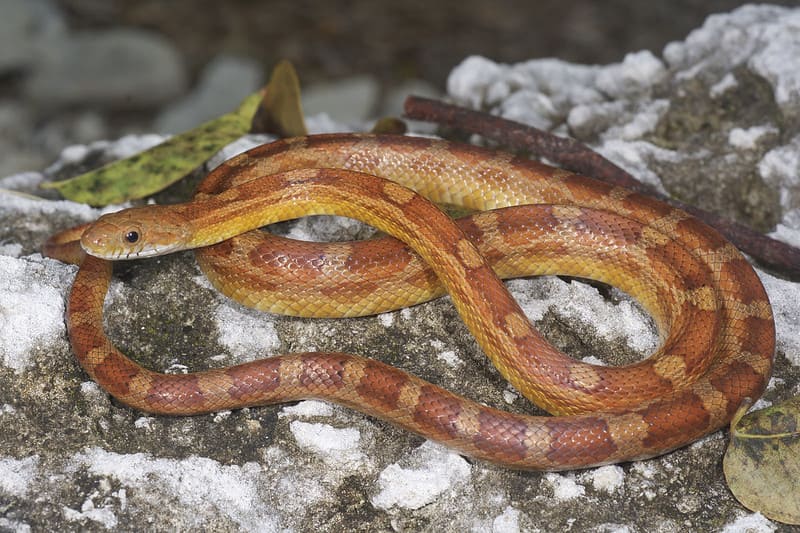
Copperhead Black Rat Snake
The copperhead black rat snakes, often mistaken for the venomous copperhead snake, is a non-venomous reptile found in North America. This species, scientifically named Pantherophis spiloides, boasts a distinct dark colouration that sets it apart. Despite its name, it’s important to note that this snake is not related to the venomous copperhead. With a diet that includes rodents and birds, it plays a valuable role in rodent control within its habitat. Its presence contributes to the diversity of snake species in North America.
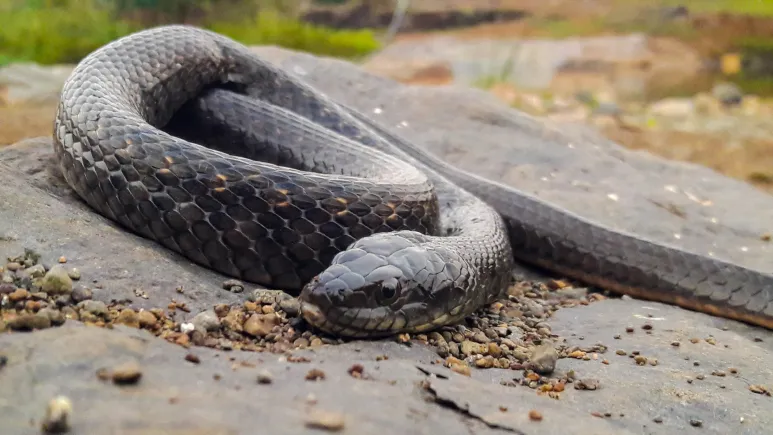
Copperhead Gray Rat Snake
The copperhead gray rat snakes, scientifically known as Pantherophis spiloides, is a non-venomous snake species characterized by its grayish hue. These adaptable snakes are found in North America and are often spotted in various habitats, including forests and grasslands. Similar to their relatives, they contribute to rodent control by preying on these pests. Their appearances may vary, showcasing the fascinating range of colours and patterns within the rat snakes group.

Juvenile Rat Snake
Juvenile rat snakes are the young and developing members of rat snake species. These snakes display a unique charm with their smaller size and distinct patterns. As they grow, they shed their skin multiple times, eventually reaching their adult size. Juvenile rat snakes may share similarities in appearance with their adult counterparts, giving us a glimpse of the fascinating patterns and colours they will possess as they mature.
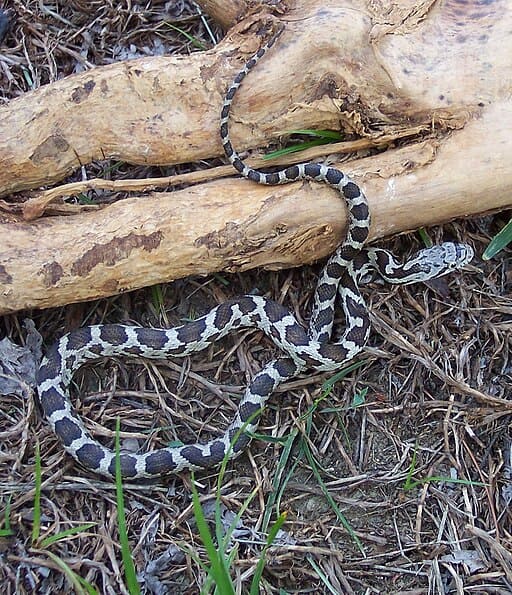
Alabama Rat Snake
The Alabama rat snakes, also known as the gray rat snake, is a non-venomous species found in the southeastern United States, including Alabama. These snakes are known for their adaptability to various habitats, from forests to open fields. With their ability to climb and their diet that includes rodents and birds, they contribute to the balance of their ecosystems. The appearance of the Alabama rat snakes can vary, showcasing the effects of local adaptations within its range.
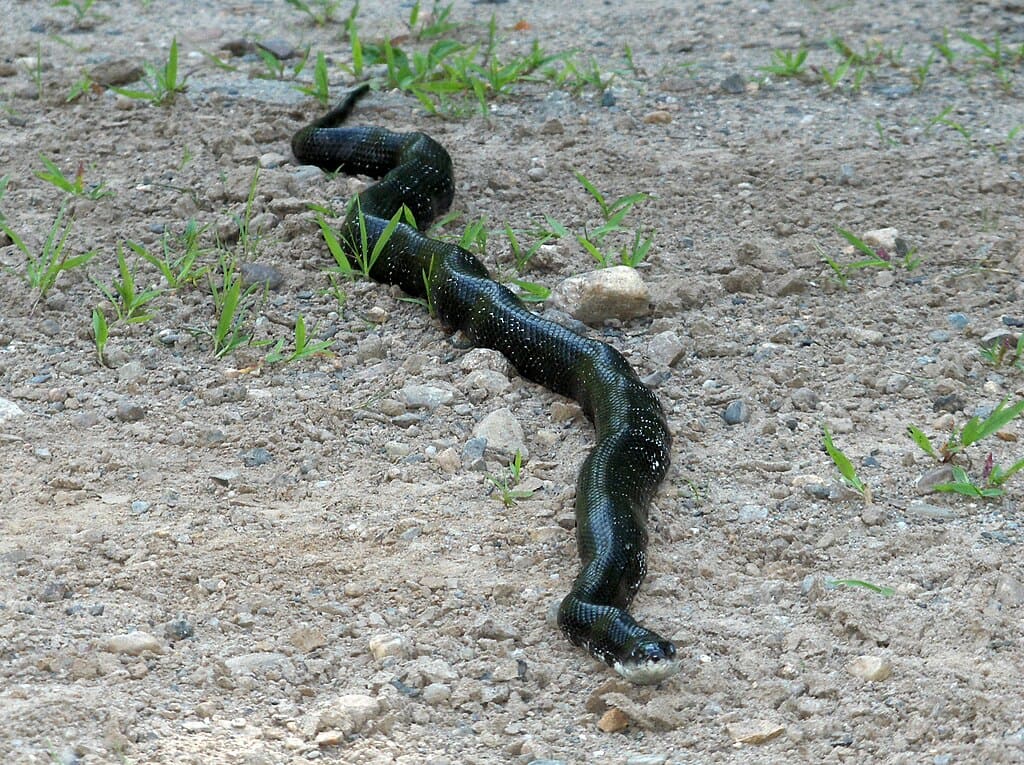
Corn Snake Rat Snake
The corn snake rat snakes, scientifically named Pantherophis guttatus, is a North American species recognized for its distinct belly scales that resemble maize kernels. These snakes are widely appreciated and are often kept as pets due to their docile nature and vibrant colouration. In their natural habitat, they play an essential role in rodent control, contributing to the health of their ecosystems. Their unique appearance and behaviour make them a fascinating subject of study.

Rhino Rat Snake
The rhino rat snake, scientifically referred to as Rhynchophis boulengeri, is a striking species native to Southeast Asia. Its name is derived from the distinctive snout shape it possesses. These snakes are predominantly arboreal, spending much of their time in trees and bushes. Their appearance is equally captivating, with colours that range from deep reds to oranges. As skilled hunters, they prey on birds and small mammals, making them significant contributors to their ecosystems.

Oriental Rat Snake
The oriental rat snakes, scientifically known as Ptyas mucosa, is a non-venomous snake species native to East and Southeast Asia. These adaptable snakes are often encountered in a range of habitats, from forests to agricultural areas. With their diverse colours and patterns, they showcase a stunning array of variations. As effective rodent hunters, they play a vital role in controlling pest populations, making them valuable assets to farmers and ecosystems alike.
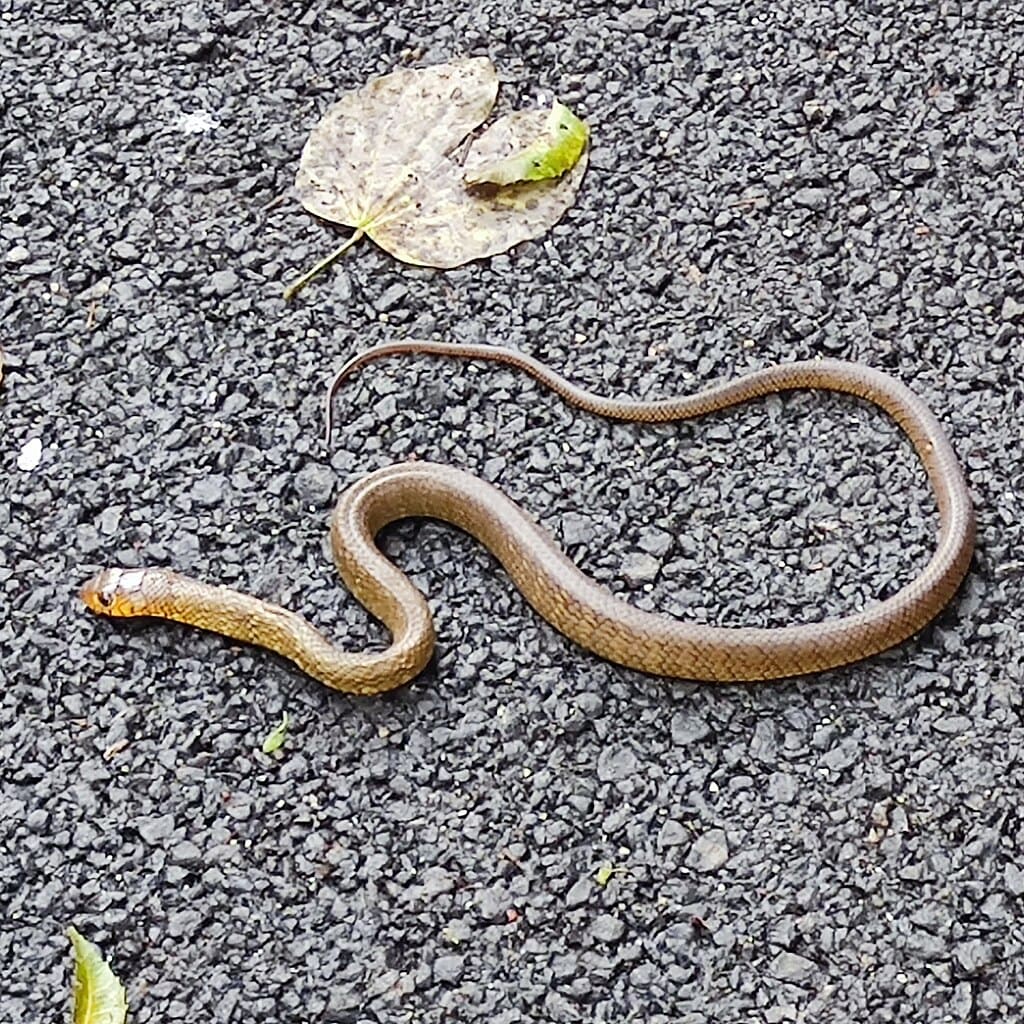
Japanese Rat Snake
The Japanese rat snakes, scientifically named Elaphe climacophora, is a native of Japan. These snakes exhibit a range of appearances based on their geographic location within the country. As non-venomous species, they primarily feed on rodents and contribute to rodent control. Their significance goes beyond ecological contributions, as they hold cultural value in some regions of Japan.
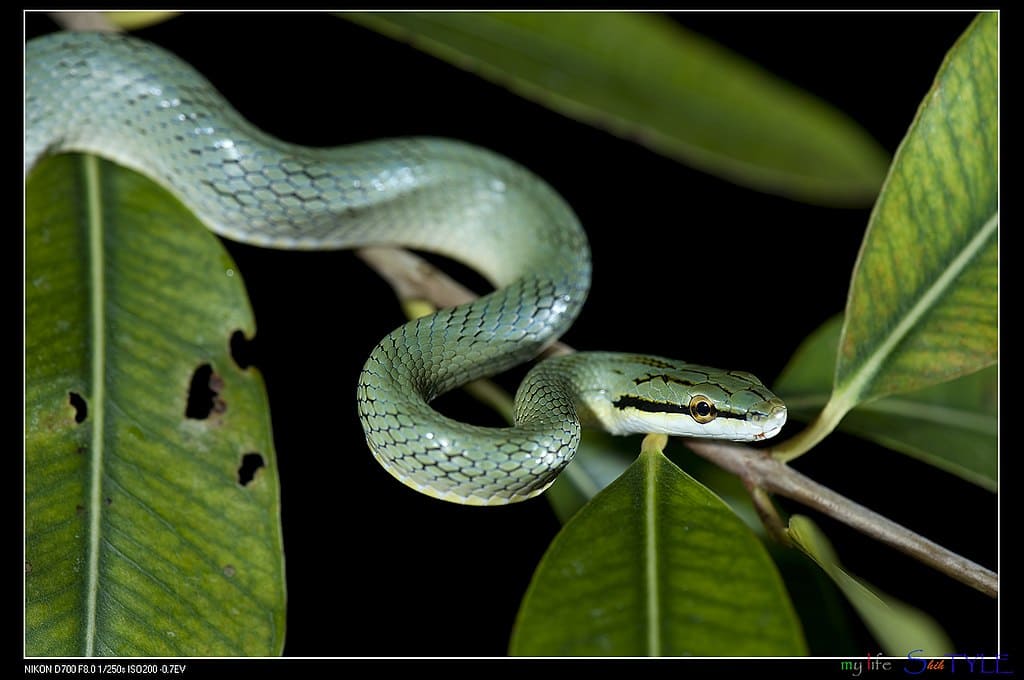
Western Rat Snake
The western rat snakes, scientifically known as Pantherophis obsoletus, is a non-venomous reptile found across North America. These snakes are skilled climbers and are often seen in trees and bushes. With their diet that includes rodents, birds, and eggs, they play a vital role in regulating populations within their ecosystems. Their appearance can vary from region to region, reflecting local adaptations and conditions.

Trans Pecos Rat Snake
The Trans Pecos rat snakes, scientifically named Bogertophis subocularis, is a species native to the Trans-Pecos region of Texas. This snake showcases remarkable adaptations to arid and rocky habitats. Its ability to thrive in such conditions demonstrates its resilience. With its distinct appearance and behaviour, it adds to the diversity of snake species found in the southwestern United States.
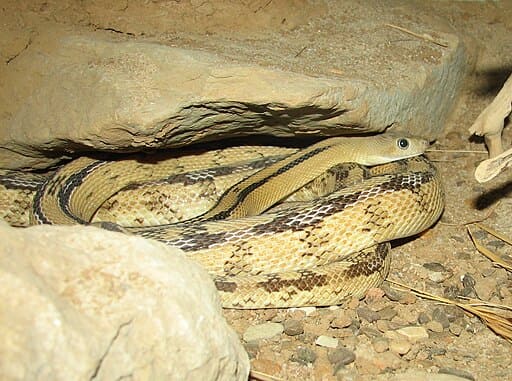
Bamboo Rat Snake
The bamboo rat snakes, scientifically referred to as Oreocryptophis porphyraceus, is a species native to East and Southeast Asia. These slender snakes are often associated with bamboo forests, where they display their arboreal behaviour. With a diet that includes rodents and small vertebrates, they contribute to controlling populations within their habitat. Their adaptations to the unique bamboo ecosystem make them a fascinating subject of study.

King Rat Snakes
King rat snakes, also known as kingsnakes, belong to the Lampropeltis genus. These non-venomous snakes are renowned for their ability to consume other snakes, including venomous species. Their presence aids in controlling snake populations, contributing to the balance of their ecosystems. Kingsnakes are valued for their role in maintaining a healthy snake community.

Mandarin Rat Snake
The mandarin rat snakes, scientifically named Euprepiophis mandarinus, is a visually striking species found in China and Vietnam. Their vibrant colours and patterns set them apart within their ecosystems. With a diurnal nature and excellent climbing abilities, they are often spotted in trees. As rodent predators, they contribute to pest control while adding to the beauty of their native habitats.

Ohio Rat Snake
The Ohio rat snakes, scientifically known as Pantherophis obsoletus, is a non-venomous species found in the eastern United States. With variations in pattern and colour, they exhibit adaptability to their diverse habitats. Their role in controlling rodent populations and their interactions with their environment make them valuable members of their ecosystems.

Oklahoma Rat Snake
The Oklahoma rat snakes, scientifically named Pantherophis obsoletus, resides in the central United States. These adaptable snakes exhibit variations in appearance and behaviour across their range. Their role in rodent control, combined with their resilience in changing environments, underscores their importance in local ecosystems.

Vietnamese Blue Beauty Rat Snake
The Vietnamese blue beauty rat snakes, scientifically known as Orthriophis taeniurus callicyanous, is a captivating species native to Southeast Asia. With its stunning blue colouration, it stands out in its habitat. Beyond its appearance, its role in controlling pest populations contributes to the health of its ecosystem. These visually striking snakes are often sought after by enthusiasts and researchers.

Arkansas Rat Snake
The Arkansas rat snakes, also referred to as the western rat snake, is a non-venomous species found in North America. Their contribution to rodent control and their interactions with their environment make them important within their ecosystems. Variations in appearance across their range reflect local adaptations and conditions.

Baird’s Rat Snake
Baird’s rat snakes, scientifically named Pantherophis bairdi, is native to North America. These snakes display variations in appearance based on their range. Their behaviour and dietary habits provide insights into their ecological role. Studying Baird’s rat snake sheds light on the intricacies of snake adaptations and their interactions with their environment.

Everglades Rat Snake
The Everglades rat snakes, also known as the Everglades ratsnake, is a species found in the unique ecosystem of Florida’s Everglades. These snakes have adapted to the challenges of their environment, showcasing distinctive behaviour and appearances. Their presence in the Everglades contributes to the diversity of species within this complex habitat.
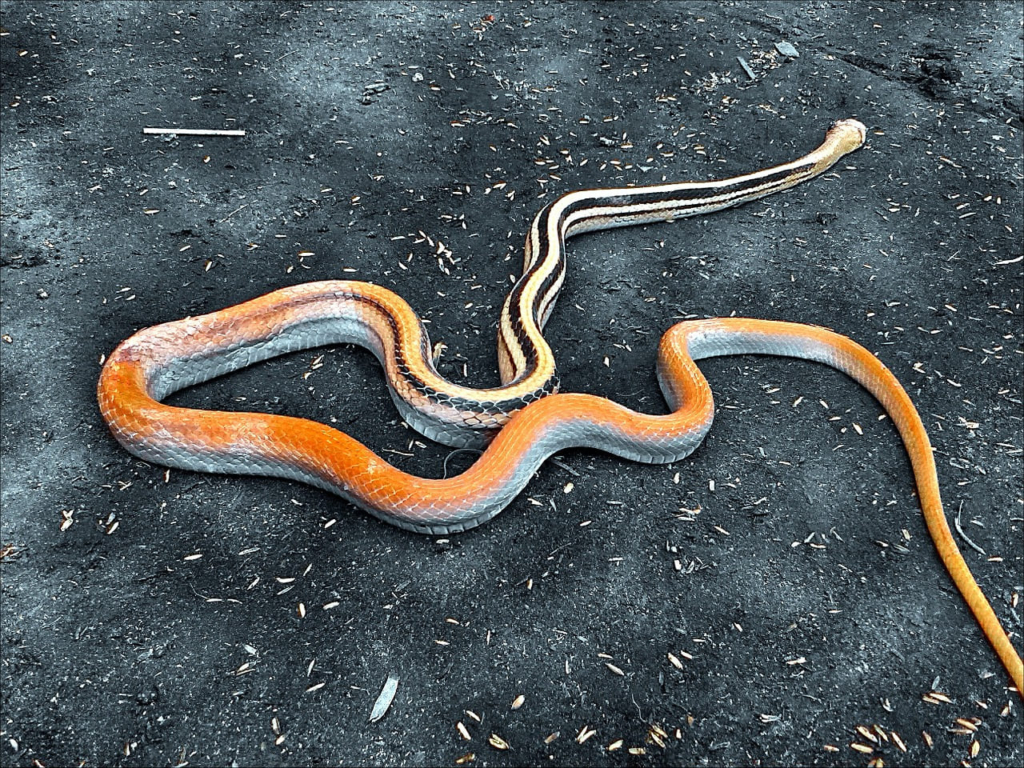
Tiger Rat Snake
The tiger rat snakes, recognized for its bold stripes, is a visually captivating species. Its appearance and behaviour reflect its adaptation to its environment. As with other rat snake species, its role in rodent control highlights its ecological significance in maintaining a balanced ecosystem.

Beauty Rat Snake
The beauty rat snakes, with its enchanting patterns, lives up to its name. Its presence in various habitats contributes to the balance of local ecosystems. These snakes play a role in rodent control and contribute to the intricate web of species interactions within their habitats.
Eastern Black Rat Snake
The eastern black rat snakes, scientifically known as Pantherophis alleghaniensis, is a North American species known for its distinct black colouration. Its behaviour and habits are of interest to researchers studying the species’ ecological role and its interactions with other organisms within its habitat.

Leucistic Texas Rat Snake
The leucistic Texas rat snakes are a rare morph that exhibits white scales due to a genetic trait. Its survival in the wild despite its unique coloration offers insights into the adaptability of snake species. This distinctive appearance makes it a fascinating subject of study and observation.
North Carolina Rat Snake
The North Carolina rat snakes, native to the southeastern United States, showcases variations in appearance based on its geographic location. Its presence contributes to rodent control and maintains the balance of local ecosystems. Its behaviours and interactions with its surroundings reflect its adaptation to changing environments.
Russian Rat Snake
The Russian rat snake, found in parts of Europe and Asia, displays regional variations in appearance and behaviour. Its role within its ecosystem and its interactions with other species are subjects of interest for researchers studying the intricacies of species coexistence and adaptation.
Tennessee Rat Snake
The Tennessee rat snakes, native to the southeastern United States, plays a role in rodent control and contributes to maintaining ecosystem balance. Variations in appearance across its range provide insights into the effects of local conditions on species characteristics and behaviours.
Blonde Trans Pecos Rat Snake
The blonde Trans Pecos rat snakes, found in the Trans-Pecos region of Texas, stands out with its light colouration. Its survival in the arid and rocky conditions of this region showcases its adaptability. The unique appearance of this snake contributes to the diversity of species within its habitat.
Kentucky Rat Snake
The Kentucky rat snakes, a non-venomous species, demonstrates variations in appearance based on its range. Its role in rodent control and its interactions with its environment highlight its ecological significance. Understanding its behaviour and habits provides insights into its contributions to its ecosystem.
Levant Rat Snake
The Levant rat snakes, native to the Middle East, is characterized by its distinct colours and patterns. Its presence in arid habitats underscores its ability to adapt to challenging conditions. This snake’s behaviour and interactions within its environment offer valuable insights into its role in the ecosystem.
Louisiana Rat Snake
The Louisiana rat snake, found in the southeastern United States, showcases varied patterns and colours. Its interactions with its environment shed light on its ecological significance. Studying this snake’s behaviour, habitat preferences, and role in the food chain provides a deeper understanding of its contribution to local ecosystems.
Albino Rat Snake
The albino rat snakes, with its lack of pigmentation, is a remarkable morph that stands out within its species. Despite its colouration challenges, its survival and adaptation highlight the resilience of snake species. Its unique appearance and genetic traits make it a fascinating subject for genetic and ecological research.
Cave Dwelling Rat Snake
The cave dwelling rat snake, as the name suggests, inhabits caves and dark environments. Its behaviour, adaptations, and interactions with cave ecosystems provide insights into its unique survival strategies. Studying this species offers a glimpse into the specialized adaptations of animals to challenging habitats.
Scaleless Rat Snake
The scaleless rat snakes, characterized by its distinct appearance due to the lack of scales, is a rarity within its species. Its unique traits provide insights into the genetic diversity of snakes and the role of scales in their physiology. Understanding the impact of scalelessness on the snake’s behavior and interactions is of interest to researchers.
Copperhead Vs Rat Snake
Comparison and differences between Copperhead and Rat Snake:
| Aspect | Copperhead | Rat Snake |
|---|---|---|
| Colouration | Coppery-brown with bands | Variable colours, patterned |
| Venomous | Yes | Non-venomous |
| Habitat | Woodlands, edges | Various habitats |
| Behaviour | Generally shy, bites when threatened | Mostly calm, non-aggressive |
| Diet | Small rodents, frogs | Rodents, birds, eggs |
| Length | Up to 3 feet | Up to 6 feet |
| Reproduction | Live birth | Egg-laying |
| Conservation Status | Least concern | Not assessed |
Black Racer Vs Black Rat Snake
Comparison and differences between Black Racer and Black Rat Snake:
| Aspect | Black Racer | Black Rat Snake |
|---|---|---|
| Colouration | Black | Black with white chin |
| Venomous | Non-venomous | Non-venomous |
| Habitat | Varied habitats, often near water | Forests, fields, farms |
| Behaviour | Fast-moving, nervous | Calm, good climber |
| Diet | Small animals, insects | Rodents, birds, eggs |
| Length | Up to 6 feet | Up to 7 feet |
| Reproduction | Egg-laying | Egg-laying |
| Conservation Status | Least concern | Not assessed |
Rat Snake Vs Cobra
Comparison and differences between Rat Snake and Cobra:
| Aspect | Rat Snake | Cobra |
|---|---|---|
| Colouration | Variable colours, patterned | Varied, often hooded |
| Venomous | Non-venomous | Highly venomous |
| Habitat | Various habitats | Varied, often grasslands |
| Behaviour | Mostly calm, non-aggressive | Aggressive when threatened |
| Diet | Rodents, birds, eggs | Small mammals, other snakes |
| Length | Up to 6 feet | Varied (species-dependent) |
| Reproduction | Egg-laying | Egg-laying |
| Conservation Status | Not assessed | Various (some endangered) |
Rat Snake Vs Corn Snake
Comparison and differences between Rat Snakes and Corn Snake:
| Aspect | Rat Snake | Corn Snake |
|---|---|---|
| Colouration | Variable colours, patterned | Orange-red with pattern |
| Venomous | Non-venomous | Non-venomous |
| Habitat | Various habitats | Woodlands, farms |
| Behaviour | Mostly calm, non-aggressive | Docile, often kept as pets |
| Diet | Rodents, birds, eggs | Rodents, small birds |
| Length | Up to 6 feet | Up to 5 feet |
| Reproduction | Egg-laying | Egg-laying |
| Conservation Status | Not assessed | Least concern |
Chicken Snake Vs Rat Snake
Comparison and differences between Chicken Snake and Rat Snake:
| Aspect | Chicken Snake | Rat Snake |
|---|---|---|
| Colouration | Variable colours, patterned | Variable colours, patterned |
| Venomous | Non-venomous | Non-venomous |
| Habitat | Farmland, gardens | Various habitats |
| Behaviour | Calm, often climbs trees | Mostly calm, good climber |
| Diet | Birds, eggs, small animals | Rodents, birds, eggs |
| Length | Up to 6 feet | Up to 6 feet |
| Reproduction | Egg-laying | Egg-laying |
| Conservation Status | Not assessed | Not assessed |
Rat Snake Vs Cottonmouth
Comparison and differences between Rat Snake and Cottonmouth:
| Aspect | Rat Snake | Cottonmouth |
|---|---|---|
| Colouration | Variable colours, patterned | Dark with distinctive markings |
| Venomous | Non-venomous | Highly venomous |
| Habitat | Various habitats | Wetlands, water edges |
| Behaviour | Mostly calm, non-aggressive | Aggressive when threatened |
| Diet | Rodents, birds, eggs | Fish, amphibians, small mammals |
| Length | Up to 6 feet | Up to 4 feet |
| Reproduction | Egg-laying | Live birth |
| Conservation Status | Not assessed | Least concern |
King Snake Vs Rat Snake
Comparison and differences between King Snake and Rat Snake:
| Aspect | King Snake | Rat Snake |
|---|---|---|
| Colouration | Variable colours, patterned | Variable colours, patterned |
| Venomous | Non-venomous | Non-venomous |
| Habitat | Various habitats | Various habitats |
| Behaviour | Constrictor, eats other snakes | Mostly calm, non-aggressive |
| Diet | Snakes, rodents, eggs | Rodents, birds, eggs |
| Length | Up to 6 feet | Up to 6 feet |
| Reproduction | Egg-laying | Egg-laying |
| Conservation Status | Not assessed | Not assessed |
Rat Snake Vs Rattlesnake
Comparison and differences between Rat Snake and Rattlesnake:
| Aspect | Rat Snake | Rattlesnake |
|---|---|---|
| Colouration | Variable colours, patterned | Varied with rattles |
| Venomous | Non-venomous | Highly venomous |
| Habitat | Various habitats | Varied, often grasslands |
| Behaviour | Mostly calm, non-aggressive | Defensive, rattles when threatened |
| Diet | Rodents, birds, eggs | Rodents, small mammals |
| Length | Up to 6 feet | Varied (species-dependent) |
| Reproduction | Egg-laying | Live birth |
| Conservation Status | Not assessed | Various (some endangered) |
Bull Snake Vs Rat Snake
Comparison and differences between Bull Snake and Rat Snake:
| Aspect | Bull Snake | Rat Snake |
|---|---|---|
| Colouration | Variable colours, patterned | Variable colours, patterned |
| Venomous | Non-venomous | Non-venomous |
| Habitat | Grasslands, open areas | Various habitats |
| Behaviour | Hiss and rattle tail | Mostly calm, non-aggressive |
| Diet | Rodents, small mammals | Rodents, birds, eggs |
| Length | Up to 8 feet | Up to 6 feet |
| Reproduction | Egg-laying | Egg-laying |
Rat Snake Vs Black Racer
Comparison and differences between Rat Snake and Black Racer:
| Aspect | Rat Snake | Black Racer |
|---|---|---|
| Variable colours, patterned | Behaviour | Black with white chin |
| Venomous | Non-venomous | Non-venomous |
| Habitat | Various habitats | Varied, often near water |
| Behavior | Mostly calm, non-aggressive | Fast-moving, nervous |
| Diet | Rodents, birds, eggs | Small animals, insects |
| Length | Up to 6 feet | Up to 6 feet |
| Reproduction | Egg-laying | Egg-laying |
| Conservation Status | Not assessed | Least concern |
Rat Snake Colors
Rat snakes, a diverse group of non-venomous serpents, showcase a fascinating array of colours that vary across species and geographical locations. These colours serve not only as captivating visual features but also play a role in camouflage, communication, and adaptation. Here’s a look at some distinct rat snake colour variations:
Black Rat Snake
Black Rat Snakes, often known for their sleek and dark appearance, exhibit a striking contrast with their white or gray chin and throat scales. These large serpents, found in North America, make use of their colouration to blend seamlessly into their surroundings, aiding them in both hunting and evading predators.
Gray Rat Snake
Gray Rat Snakes, native to the southeastern United States, sport a gray background adorned with darker gray or brown blotches. This muted colour palette assists them in staying concealed within their preferred habitats of woodlands, swamps, and grasslands.
Red Rat Snake
Red Rat Snakes, also referred to as Red Corn Snakes, showcase vibrant hues of red, orange, and brown in their patterns. Native to parts of the southeastern United States, their colorful appearance is often admired by reptile enthusiasts, making them a popular choice in the pet trade.
Yellow Rat Snake
Yellow Rat Snakes encompass a broad spectrum of shades ranging from light yellow to deeper golden tones. The Florida Yellow Rat Snake, a subspecies, is particularly renowned for its radiant colouration. Found in southeastern regions of the United States, these snakes can be seen in various habitats including forests and urban areas.
Brown Rat Snake
Brown Rat Snakes present earthy and neutral shades of brown, allowing them to blend seamlessly with the foliage of their surroundings. These adaptable snakes inhabit diverse landscapes, ranging from woodlands to farmlands, and contribute to the ecosystem by controlling rodent populations.
Greenish Rat Snake
Greenish Rat Snakes, as the name suggests, possess greenish hues that aid them in camouflaging within lush vegetative environments. Found across Asia and Europe, these serpents are skilled climbers and are often found near water bodies and within forests.
Blue Beauty Rat Snake
The Blue Beauty Rat Snakes stands out with its captivating blue colouration, making it a sought-after species among collectors. Native to Taiwan and southeastern Asia, this snake’s vibrant appearance is a result of its unique pigmentation.
Green Red Tailed Rat Snake
Green Red Tailed Rat Snakes boast a vibrant green body complemented by a distinctive red tail. These visually striking snakes inhabit various habitats and are known for their active daytime behaviour.
Blue Rhino Rat Snake
The Blue Rhino Rat Snake showcases a stunning combination of blue and white hues. Native to Thailand, these serpents are notable for their resemblance to the patterns found on rhinoceros beetles.
Orange Rat Snake
Orange Rat Snakes exhibit warm orange and reddish tones in their colouration. These snakes are found in diverse environments and contribute to natural pest control by preying on rodents.
Red Tailed Green Rat Snake
Red Tailed Green Rat Snakes feature a green body colour with a vibrant red tail, creating a captivating contrast. Native to Southeast Asia, these snakes are known for their arboreal lifestyle.
Rate Snake Names and Meaning
Rat snakes, a diverse group of non-venomous serpents, are bestowed with a variety of names in different languages and regions, each often carrying its own significance that reflects the snake’s appearance, behaviour, or habitat. These names not only provide a linguistic identity but also offer insights into the cultural perception of these reptiles.
Rat Snake In Hindi
In the rich tapestry of languages, Hindi refers to the rat snake as “गुंडल” (Gundal). This term encapsulates the essence of this creature, underscoring its role as a natural controller of rodent populations, essential for maintaining ecological balance.
Rat Snake In Tamil
The language of Tamil designates the rat snake as “பருட்புலி” (Parudhbhuli). This term gracefully weaves together the distinctive qualities of the snake, portraying its presence as a guardian against rodents and pests in the local environment.
Rat Snake In Kannada
In the linguistic treasure trove of Kannada, the rat snake is known as “ಗುಂಡು ಹಾವು” (Gundu Haavu). This phrase not only highlights its serpentine nature but also underscores its importance in maintaining the delicate ecological balance by preying on rodents.
Rat Snake In Malayalam
Malayalam, a language as rich and vibrant as the landscapes it describes, refers to the rat snake as “പരുവപ്പുളി” (Paruvappuli). This term seamlessly melds together the snake’s form and function, portraying its role as a protector against rodent nuisances.
Rat Snake In Marathi
In the poetic language of Marathi, the rat snake is named “गोंडल” (Gondal). This name weaves together the image of the snake and its significance as a natural pest controller, elegantly capturing its essence.
Rat Snake In Telugu
Telugu, a language known for its lyrical qualities, refers to the rat snake as “గుండెలు” (Gundelu). This term, in its melodic resonance, portrays the snake as a guardian against rodents, reflecting its ecological importance.
Rat Snake Malayalam
In the vernacular of Malayalam, the term for rat snake remains “പരുവപ്പുളി” (Paruvappuli). This consistent nomenclature underscores the snake’s timeless role as a natural regulator of rodent populations.
Rat Snake Scientific Name
The intricate world of taxonomy assigns rat snakes to the genus Elaphe. However, the realm of rat snakes is vast, encompassing various species, each with its distinct scientific name. For instance, the Eastern Rat Snake bears the scientific name Elaphe obsoleta, while the Japanese Rat Snake is known as Elaphe climacophora.
Rat Snake Goa
In the idyllic coastal state of Goa, the realm of rat snakes embraces its own distinctive presence. The rat snake commonly encountered in Goa is likely to be the Indian Rat Snake, scientifically known as Ptyas mucosa. This species contributes to the state’s ecological equilibrium by preying on rodents, aligning with its role as a natural pest controller.
History of Rat Snake
The history of rat snakes is intertwined with the ecosystems they inhabit and their role in controlling rodent populations. These non-venomous serpents have a diverse lineage dating back millions of years, evolving remarkable adaptations to survive and thrive. Rat snakes have been revered for their ability to keep rodent populations in check, a role that has led to their coexistence with humans and appreciation for their ecological contributions.
Appearance of Rat Snake
Rat snakes exhibit a wide range of appearances, with variations in colour, pattern, and size among different species. Their colours can span from earthy browns and grays to vibrant yellows, oranges, and even blues. Some sport distinctive patterns and markings, aiding in camouflage and mimicry. The scales of rat snakes can vary from smooth to keeled, depending on the species and habitat. Their slender bodies, distinct head shapes, and keen eyesight contribute to their unique appearance.
Temperament of Rat Snake
Rat snakes are generally characterized by their calm and non-aggressive temperament. While their initial response to perceived threats might involve hissing or striking, they often calm down quickly when handled gently and with care. Rat snakes are not prone to unprovoked aggression and are known for their docile nature, which makes them a popular choice among reptile enthusiasts and pet owners.
Behavior of Rat Snake
The behavior of rat snakes is influenced by their environment, diet, and natural instincts. These snakes are proficient climbers, using their strong bodies and scaled bellies to ascend trees and bushes in pursuit of prey or to find safe roosting spots. They are primarily diurnal, meaning they are active during the day, and are known for their hunting prowess when it comes to rodents and birds. Rat snakes are also skilled swimmers and can move gracefully through water bodies.
Rat Snake Eggs
Rat snakes reproduce through the laying of eggs, a process that varies based on species and environmental conditions. The female rat snake will typically find a secluded spot to lay her eggs, often in rotting logs or burrows. She then coils around the eggs to provide protection and ensure proper incubation. The incubation period varies, but eventually, the eggs hatch, giving rise to a new generation of rat snakes.
Are Rat Snakes Aggressive
Contrary to many misconceptions, rat snakes are not inherently aggressive. Their natural behaviour revolves around hunting, self-preservation, and maintaining their territory. While they might exhibit defensive behaviour when threatened, such as hissing or striking, they rarely show true aggression without provocation. With proper handling and respect for their space, rat snakes are usually docile and calm creatures.
Black Rat Snake Size
Black Rat Snakes, also known as Eastern Rat Snakes, can grow to impressive lengths. Adult specimens often reach between 5 to 8 feet, with females generally being larger than males. Their substantial size contributes to their role as efficient hunters of rodents, birds, and other small prey.
Rat and Snake Compatibility
Rats and snakes have an intricate relationship in nature. Rat snakes, as their name suggests, are proficient at preying on rodents, which often includes rats. In certain ecosystems, rat snakes play a crucial role in maintaining rodent populations and preventing overgrowth. This dynamic highlights the intricate balance within ecosystems and the interdependence of species.
Rat Snake Skin
Rat snakes shed their skin periodically as they grow. This process, known as molting or shedding, allows them to accommodate their increasing size. The old skin is sloughed off, revealing a new, vibrant layer underneath. During shedding, rat snakes might appear dull or cloudy-eyed, and they often seek shelter to protect their vulnerable state.
Rat Snake Teeth
Rat snakes possess rows of sharp, recurved teeth designed to grasp and secure their prey. Unlike venomous snakes, rat snakes lack fangs and venom glands. Instead, they rely on constriction and their strong bite to subdue and consume their prey. Their teeth, while formidable, pose minimal threat to humans and are generally not dangerous.
Black Rat Snake Habitat
Black Rat Snakes inhabit a wide range of environments across North America, from forests and fields to farmlands and suburban areas. They are skilled climbers and often seek refuge in trees, shrubs, and abandoned structures. Their adaptability to various habitats contributes to their widespread distribution.
Identification Rat Snake Skin
Identifying a rat snake based on its skin involves observing its colour, pattern, and scale texture. Different species exhibit unique colour variations and patterns, which can range from solid colours to intricate designs. Additionally, the texture of the scales, whether smooth or keeled, provides further clues for identification.
Rat Snake As A Pet
Rat snakes are popular choices as pets due to their manageable size, relatively docile temperament, and low maintenance requirements. However, potential pet owners should thoroughly research the specific needs of the chosen species. Providing appropriate enclosure, temperature, humidity, and diet is essential for their well-being. Responsible ownership, including education and ethical considerations, contributes to a positive experience for both the snake and the owner.
Rate Snake in Different Places
Rat snakes, known for their adaptability and wide distribution, can be found in diverse habitats across various regions. These non-venomous serpents have established their presence in different places, showcasing their ability to thrive in a range of environments. From forests to farmlands, let’s explore where you might encounter rat snakes around the world.
Rat Snake Florida
Rat snakes are a familiar sight in the diverse landscapes of Florida. Among the various species found here, the Florida Rat Snake stands out. With its adaptable nature, it thrives in a range of habitats including forests, swamps, and even urban areas. Its colouration and pattern often mimic its surroundings, aiding in its survival by avoiding predators and ambushing prey. The Florida Rat Snake plays an important ecological role by controlling rodent populations and contributing to the balance of its ecosystem.
Rat Snake Georgia
The state of Georgia hosts a variety of rat snake species, reflecting the region’s ecological diversity. Among them, the Gray Rat Snake and the Eastern Rat Snake are commonly encountered. These snakes contribute to Georgia’s ecosystems by preying on rodents, thus preventing overpopulation. Their role in maintaining balance highlights the interconnectedness of species within their habitat.
Illinois Rat Snake
In the heart of the Midwest, the Illinois Rat Snake thrives in a range of environments, from woodlands to grasslands. This non-venomous species plays a crucial role in controlling rodent populations, making it a valuable asset to local ecosystems. Recognized for its calm temperament and striking appearance, the Illinois Rat Snake is often appreciated by enthusiasts and nature lovers.
Indiana Rat Snake
The state of Indiana is home to various rat snake species, including the Eastern Rat Snake and Gray Rat Snake. These snakes are celebrated for their pest control abilities, as they actively hunt rodents and maintain the delicate balance of the ecosystem. The presence of rat snakes in Indiana highlights the intricate relationships between species in nature.
Rat Snake Juvenile
Juvenile rat snakes exhibit distinct characteristics that evolve as they mature. Young rat snakes often have brighter and more vibrant colours compared to their adult counterparts, aiding in their camouflage and survival. As juveniles, these snakes are smaller and more agile, allowing them to access a wider range of prey and hiding spots. Their growth and transformation over time offer insights into the life cycle and development of these fascinating creatures.
Rat Snake Kansas
The landscapes of Kansas are graced by the presence of rat snakes, contributing to the state’s biodiversity. The Western Rat Snake, also known as the Great Plains Rat Snake, is often spotted in Kansas. Its ability to thrive in grasslands and open habitats reflects its adaptability and resourcefulness. These serpents play a valuable role in maintaining local ecosystems by regulating rodent populations.
Rat Snake Arkansas
Arkansas is home to a diverse range of snake species, including the Texas Rat Snake and the Gray Rat Snake. These snakes serve as natural controllers of rodent populations, playing a vital role in the state’s ecosystems. The forests, grasslands, and wetlands of Arkansas provide suitable habitats for these serpents to thrive and contribute to the delicate balance of the local environment.
Florida Brown Rat Snake
The Florida Brown Rat Snake is a distinctive member of the rat snake family found in the state. Its colouration varies from shades of brown to gray, often featuring darker patterns that aid in its camouflage. As a skilled climber, this snake inhabits a wide range of habitats, including trees, shrubs, and rocky areas. Its role in controlling rodent populations makes it a valuable asset to Florida’s natural landscapes.
Leucistic Rat Snake
The term “leucistic” refers to a genetic condition that affects pigmentation, resulting in a partial or complete lack of colouration. The Leucistic Rat Snakes displays this unique trait, often appearing almost entirely white. This condition sets them apart from their more commonly coloured counterparts, offering a rare and captivating sight in the world of rat snakes.
Michigan Rat Snake
In Michigan’s diverse ecosystems, the Eastern Rat Snake finds a suitable home. These snakes contribute to the state’s environment by preying on rodents, helping to maintain the balance of local wildlife populations. Their presence underscores the intricate relationships between species and their roles in the broader ecosystem.
New Jersey Rat Snake
Rat snakes, including the Eastern Rat Snakes, inhabit the landscapes of New Jersey. These non-venomous serpents play a crucial role in controlling rodent populations, contributing to the health of local ecosystems. Their presence in New Jersey highlights the importance of these natural pest controllers in maintaining the delicate balance of nature.
Missouri Black Rat Snake
The Missouri Black Rat Snake, also known as the Eastern Black Rat Snake, thrives in the diverse habitats of the state. Its name is derived from its dark colouration, which aids in camouflage. These snakes are skilled climbers, often found in trees and bushes. By consuming rodents and other small prey, they actively contribute to the regulation of local wildlife populations.
Rat Snake Pennsylvania
In Pennsylvania’s woodlands, fields, and urban areas, rat snakes, including the Eastern Rat Snakes, play an essential role in maintaining ecosystem balance. These serpents, known for their pest control abilities, help control rodent populations and prevent overgrowth. The presence of rat snakes reflects the interconnectedness of species within their environment.
Mississippi Rat Snake
The landscapes of Mississippi host a variety of snake species, including the Mississippi Rat Snake, also known as the Eastern Yellow Belly Ratsnake. With its striking colouration and pattern, this snake serves as both an ecological asset and a captivating sight for nature enthusiasts. By controlling rodent populations, it contributes to the well-being of local ecosystems.
Thai Bamboo Rat Snake
Originating from the tropical regions of Southeast Asia, the Thai Bamboo Rat Snakes are recognized for its slender form and distinctive colouration. These snakes often exhibit vibrant hues of green and yellow, which aid in their camouflage within bamboo thickets and lush vegetation. Their unique appearance and natural behaviours make them sought-after subjects for herpetology enthusiasts.
Gulf Hammock Rat Snake
The Gulf Hammock Rat Snakes are a species native to Florida and parts of Georgia. Known for its cryptic colouration and calm temperament, it contributes to controlling rodent populations in its habitat. These serpents play a vital role in maintaining the balance of local ecosystems, reflecting the intricate relationships between species.
Ky Rat Snake
Kentucky’s natural landscapes are inhabited by various rat snake species, including the Eastern Rat Snake. These non-venomous serpents play an essential role in maintaining ecosystem balance by preying on rodents. Their presence in Kentucky’s diverse environments highlights their importance as natural pest controllers.
Pa Rat Snake
Rat snakes, including the Eastern Rat Snake, inhabit the woodlands and fields of Pennsylvania. These serpents actively contribute to the regulation of rodent populations, helping to maintain the health of local ecosystems. Their presence underscores the interconnectedness of species within their environment.
Tn Rat Snake
The state of Tennessee is home to a variety of rat snake species, each contributing to the state’s biodiversity. These snakes, including the Eastern Rat Snake, play a crucial role in controlling rodent populations, thus aiding in the maintenance of local ecosystems. Their presence highlights the intricate relationships between species within their habitat.
Sc Rat Snake
Rat snakes, such as the Eastern Rat Snake, inhabit South Carolina’s diverse landscapes. These serpents are natural pest controllers, preying on rodents and maintaining ecosystem balance. Their presence reflects the vital roles they play in the delicate web of life in South Carolina’s environment.
Rat Snake Nj
In the state of New Jersey, rat snakes, including the Eastern Rat Snake, contribute to the ecosystem by controlling rodent populations. These non-venomous serpents help maintain the balance of local wildlife and prevent overgrowth. Their presence underscores the interconnectedness of species within the environment.
Rat Snake Nc
North Carolina’s landscapes are inhabited by various rat snake species, including the Eastern Rat Snake. These serpents are essential in regulating rodent populations, playing a crucial role in maintaining ecosystem balance. Their presence highlights the intricate relationships between species within their environment.
Rat Snake Ohio
The state of Ohio hosts a variety of rat snake species, each contributing to the delicate balance of local ecosystems. These snakes, including the Eastern Rat Snake, play an essential role in controlling rodent populations, preventing overgrowth, and ensuring the health of the environment. Their presence underscores the interconnectedness of species within their habitat.
Rat Snake Oklahoma
In the diverse habitats of Oklahoma, rat snakes play a crucial role in maintaining ecosystem balance. These serpents, including the Western Rat Snake, contribute to rodent control and the health of local wildlife populations. Their presence highlights the intricate relationships between species within their environment.
Rat Snake Louisiana
Louisiana’s rich ecosystems are home to a variety of snake species, including rat snakes. These serpents, such as the Louisiana Pine Snake, contribute to the balance of local ecosystems by preying on rodents and controlling their populations. Their presence reflects the intricate web of life in Louisiana’s environment.
Rat Snake Tennessee
Tennessee’s landscapes are inhabited by various rat snake species, each playing a vital role in maintaining ecosystem balance. These snakes, including the Eastern Rat Snake, contribute to rodent control and the health of local wildlife populations. Their presence underscores the interconnectedness of species within their habitat.
Rat Snake Virginia
Rat snakes, including the Eastern Rat Snake, inhabit the diverse landscapes of Virginia. These serpents contribute to controlling rodent populations, maintaining ecosystem balance, and preventing overgrowth. Their presence highlights the interconnected relationships between species within the environment.
Rat Snake Missouri
Missouri’s ecosystems are home to a variety of rat snake species, including the Eastern Rat Snake and the Black Rat Snake. These snakes contribute to the balance of local ecosystems by preying on rodents and maintaining the health of wildlife populations. Their presence underscores the intricate relationships between species within their habitat.
Rat Snake Kentucky
In Kentucky’s natural landscapes, various rat snake species, including the Eastern Rat Snake, contribute to maintaining ecosystem balance. These non-venomous serpents play an essential role in controlling rodent populations, preventing overgrowth, and ensuring the health of the environment. Their presence highlights the interconnectedness of species within their habitat.
Rat Snake Maryland
Rat snakes, including the Eastern Rat Snake, inhabit the woodlands, fields, and urban areas of Maryland. These serpents contribute to controlling rodent populations, maintaining ecosystem balance, and preventing overgrowth. Their presence underscores the interconnected relationships between species within the environment.
Black Rat Snake Virginia
The Black Rat Snake, also known as the Eastern Rat Snake, is a common sight in the state of Virginia. Its dark colouration and adaptable nature aid in its survival and role as a natural pest controller. These serpents help maintain the balance of local ecosystems by controlling rodent populations.
Black Rat Snakes in Ohio
Black Rat Snakes, also known as Eastern Rat Snakes, thrive in the diverse landscapes of Ohio. Their dark colouration and non-venomous nature make them valuable assets to the environment. By preying on rodents, they contribute to rodent control and the health of local ecosystems.
Black Rat Snakes in Georgia
In the state of Georgia, Black Rat Snakes, also known as Eastern Rat Snakes, play a crucial role in maintaining ecosystem balance. These serpents contribute to controlling rodent populations, aiding in the prevention of overgrowth, and ensuring the health of local wildlife populations.
Red Rat Snakes in Florida
Red Rat Snakes, often known as Red Corn Snakes, are captivating residents of Florida’s diverse habitats. With their vibrant colouration ranging from reds to oranges, they contribute to the visual diversity of the region’s wildlife. These snakes play a vital role in controlling rodent populations, helping to maintain the balance of local ecosystems.
Rat Snake Breeds Prices in India
In India, the prices of rat snake breeds can vary based on factors such as rarity, color morphs, size, and captive breeding efforts. Here’s a general range of prices for different rat snake breeds in the Indian market:
- Common Rat Snake (Ptyas mucosa): ₹500 to ₹1,500 INR
- Banded Racer (Argyrogena fasciolata): ₹800 to ₹2,000 INR
- Green Vine Snake (Ahaetulla nasuta): ₹2,000 to ₹5,000 INR
- Olive Forest Snake (Sibynophis sagittarius): ₹1,000 to ₹3,000 INR
- Trinket Snake (Coelognathus helena): ₹1,000 to ₹2,500 INR
Rat Snake Breeds Prices in the USA
In the USA, the prices of rat snake breeds can also vary significantly due to factors such as rarity, genetics, morphs, and breeder reputation. Here’s a general range of prices for different rat snake breeds in the US market:
- Eastern Rat Snake (Pantherophis alleghaniensis): $30 to $150 USD
- Corn Snake (Pantherophis guttatus): $20 to $150 USD (Common morphs), $100 to $500+ USD (Designer morphs)
- Texas Rat Snake (Pantherophis obsoletus lindheimeri): $30 to $150 USD
- Grey Rat Snake (Pantherophis spiloides): $30 to $150 USD
- Black Rat Snake (Pantherophis obsoletus): $30 to $150 USD
- Everglades Rat Snake (Pantherophis obsoletus rossalleni): $50 to $200 USD
Facts about Rat Snake
Some interesting facts about rat snakes:
- Non-Venomous Predators: Rat snakes are non-venomous constrictors, relying on constriction to subdue their prey. They are known for their efficiency in controlling rodent populations, making them valuable to ecosystems and human environments.
- Widespread Distribution: Rat snakes have a global presence, inhabiting diverse regions across North America, Asia, Europe, and other parts of the world. Their adaptability to various habitats contributes to their wide distribution.
- Climbing Abilities: Many rat snake species are skilled climbers, using their strong bodies and flexible scales to ascend trees and shrubs in search of prey or shelter. This arboreal behaviour is essential for their survival and hunting strategy.
- Camouflage Masters: Rat snakes often exhibit excellent camouflage with their surroundings. Their coloration and patterns help them blend seamlessly into their environment, aiding in both hunting and evading predators.
- Diverse Colors and Patterns: Rat snakes come in a wide range of colours and patterns. From earthy browns and grays to vibrant yellows, reds, and blues, their diverse appearances reflect their habitat, behaviour, and genetics.
- Varied Diet: While they primarily feed on rodents, rat snakes have a varied diet that includes birds, eggs, and other small mammals. Their ability to consume a variety of prey items makes them adaptable predators.
- Egg Layers: Rat snakes reproduce by laying eggs. The female typically finds a sheltered spot to lay her eggs, and she may coil around them for protection during incubation. The number of eggs laid varies by species.
- Mimicry and Warning Behavior: Some rat snake species mimic the appearance of venomous snakes, utilizing patterns and behaviours to deter potential predators. They might flatten their heads, hiss, and vibrate their tails to resemble venomous snakes.
- Skin Shedding: Rat snakes shed their skin periodically as they grow. This process, known as molting, allows them to accommodate their increasing size. Shedding also helps them remove parasites and maintain healthy skin.
- Docile Temperament: Rat snakes are generally non-aggressive and have a reputation for docility. When approached calmly and respectfully, they usually tolerate handling well, making them popular among reptile enthusiasts.
Pros and Cons of Rat Snake
Some common pros and cons of rat snakes:
| Pros of Rat Snakes | Cons of Rat Snakes |
|---|---|
| Effective Rodent Control | Misidentification with Venomous Snakes |
| Non-Venomous and Non-Threatening | Can Be Stressed by Handling |
| Wide Distribution and Adaptability | Limited to Preying on Small Prey |
| Camouflage for Hunting and Safety | Require Proper Care in Captivity |
| Valuable Ecosystem Contributors | Can Be Vulnerable to Habitat Loss |
| Play a Role in Balancing Ecosystems | Limited Interaction as Pets |
| Docile Nature and Ease of Handling | Potential Impact on Local Species |
| Varied Color Morphs and Patterns | Potential for Illegal Collection |
| Interesting Behaviors and Ecology | Dependent on Rodent Population |
Care Tips for Rat Snake
Proper care is essential to ensure the health and well-being of your rat snake. Here are some care tips to consider:
- Habitat: Provide a spacious and secure enclosure with branches, hiding spots, and a suitable substrate. The enclosure should replicate the snake’s natural environment.
- Temperature and Lighting: Maintain a temperature gradient within the enclosure, offering a warm side (85-90°F or 29-32°C) and a cooler side (75-80°F or 24-27°C). Use a heat source and UVB lighting as needed.
- Humidity: Monitor and maintain appropriate humidity levels (50-60%) using a water bowl and occasional misting.
- Feeding: Feed your rat snake appropriately sized prey items. Younger snakes eat more frequently (about every 5-7 days), while adults can eat every 10-14 days.
- Water: Provide clean, fresh water at all times for drinking and soaking.
- Handling: Handle your rat snake gently and infrequently to minimize stress. Wash your hands before and after handling to prevent transferring any pathogens.
- Health Checks: Regularly monitor your snake’s behaviour, shedding, and appetite. Look for signs of illness such as regurgitation, mucus discharge, or changes in behaviour.
- Veterinary Care: If you notice any health concerns, consult a veterinarian with experience in reptile care. Regular check-ups are also recommended.
- Shedding: Provide a humid hide with damp moss to help your snake shed its skin. Incomplete sheds can lead to health issues.
- Social Interaction: While rat snakes don’t require social interaction, observe your snake’s behaviour to learn its habits and preferences.
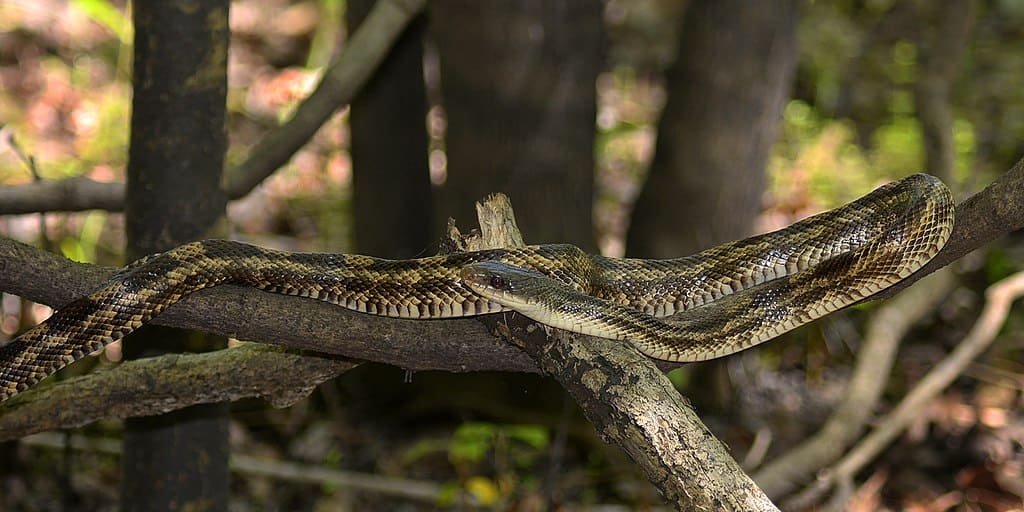
Health Issues of Rat Snake
Rat snakes, like all animals, can experience health issues. Common health problems in rat snakes include:
- Respiratory Infections: These can be caused by improper temperature or humidity, leading to wheezing, open-mouth breathing, and nasal discharge.
- Mites and Parasites: External parasites like mites can infest rat snakes. Regular health checks and proper enclosure hygiene can help prevent infestations.
- Digestive Issues: Inadequate digestion due to incorrect temperatures, stress, or feeding issues can lead to regurgitation or constipation.
- Skin Infections: Poor husbandry, dirty enclosures, or rough substrates can cause skin infections in rat snakes.
- Injuries: Rough handling, improper enclosure setup, or inappropriate prey sizes can lead to injuries.
- Metabolic Bone Disease (MBD): A lack of proper UVB lighting and calcium supplementation can lead to MBD, causing deformities and weakness in bones.
Rat Snake Lifespan
The lifespan of a rat snake can vary based on factors such as species, care, genetics, and environmental conditions. On average, rat snakes can live between 15 to 25 years in captivity when provided with proper care.
Food for Rat Snake
Best Food for Rat Snakes:
| Food for Rat Snakes | Feeding Guidelines and Considerations |
|---|---|
| – Rodents (mice, rats, gerbils) | – Juvenile rat snakes: Every 5-7 days |
| – Birds and their eggs | – Adult rat snakes: Every 10-14 days |
| – Amphibians (frogs, toads) | – Offer prey items about the same size as the widest part of the snake’s body. Adjust as the snake grows. |
| – Small mammals (hamsters, voles) | – Provide a variety of prey for nutritional balance and mimic natural feeding habits. |
| – Small reptiles (lizards, other snakes) | – Most rat snakes can be fed frozen/thawed prey. Thaw frozen prey in warm water before offering. |
Rat Snake Video
Conclusion:
In conclusion, rat snakes are fascinating reptiles with diverse characteristics, behaviors, and needs. From their vital role in controlling rodent populations to their adaptability in various habitats, rat snakes demonstrate their significance in both natural ecosystems and human environments. Careful consideration of their care requirements, health considerations, and suitable diet ensures their well-being and longevity in captivity. By understanding and respecting these aspects, we can appreciate the valuable contributions of rat snakes to the world of reptiles and the ecosystems they inhabit.
Frequently Asked Questions on Rat Snakes:
Are Rat Snakes Poisonous
No, rat snakes are not poisonous. They are non-venomous snakes that use constriction to subdue their prey. They are not a threat to humans, as they lack venom and fangs for injecting venom.
What Do Rat Snakes Look Like
Rat snakes are characterized by their slender bodies, keeled scales, and distinct head shape. Their coloration varies among species, but they often have patterns of stripes, blotches, or both. Rat snakes can be found in a range of colors, including shades of gray, brown, black, and even some with vibrant patterns.
What Do Rat Snakes Eat
Rat snakes are carnivorous and primarily feed on rodents, birds, eggs, and sometimes insects. They are excellent climbers and may even raid bird nests to feed on eggs and nestlings.
Are Black Rat Snakes Poisonous
No, black rat snakes are not poisonous. They are non-venomous snakes that are harmless to humans. Their name might be misleading, but their coloration doesn’t indicate venom.
Do Rat Snakes Bite
Rat snakes can bite if they feel threatened or cornered, but their bites are not venomous and generally not harmful to humans. However, any snake bite should be cleaned and monitored for signs of infection.
Do Rat Snakes Eat Copperheads
Yes, rat snakes are known to prey on copperhead snakes and other small snakes. They are skilled hunters and can help control rodent and snake populations.
How Big Do Rat Snakes Get
The size of rat snakes varies depending on the species. While some rat snakes can be relatively small, around 3 to 4 feet (90 to 120 cm), others, like the Eastern Rat Snake, can grow up to 7 feet (210 cm) or even longer.
Are Rat Snakes Aggressive
Rat snakes are generally not aggressive toward humans and prefer to flee when confronted. However, if they feel threatened, they may adopt defensive behaviors, including hissing, striking, or musking (releasing a foul-smelling liquid).
What Is A Rat Snake
A rat snake is a type of non-venomous constrictor snake found in various parts of the world. They belong to the genus Elaphe and are known for their hunting skills and ability to control rodent populations.
Where Do Rat Snakes Live
Rat snakes are found in a wide range of habitats, including forests, grasslands, farmlands, and even urban areas. They are adaptable and can live in diverse environments.
Do Rat Snakes Eat Other Snakes
Yes, rat snakes are known to eat other snakes, including smaller venomous species. Their hunting ability and resistance to venom make them effective predators of snakes.
Do Rat Snakes Have Fangs
Rat snakes do have teeth, but they do not possess large, specialized fangs for injecting venom. Their teeth are used for gripping and subduing prey.
Are Rat Snakes Dangerous
Rat snakes are generally not dangerous to humans. They are non-venomous, shy, and prefer to avoid confrontation. However, like any wild animal, they should be respected and not provoked.
Do Snakes Eat Rats
Yes, many snake species, including rat snakes, consume rats and other rodents as a primary food source. This natural predation helps regulate rodent populations in ecosystems.
Are Texas Rat Snakes Venomous
No, Texas rat snakes are not venomous. They are a type of rat snake and are non-venomous constrictor snakes.
What Color Is A Rat Snake
The color of a rat snake varies based on the species and region. Rat snakes can be gray, brown, black, or a combination of these colors. Some species have distinctive patterns or markings.
Are Rat Snakes Poisonous To Dogs
Rat snakes are not poisonous to dogs or other pets. Their non-venomous nature means they pose no direct danger through their bite.
Do Rat Snakes Have Teeth
Yes, rat snakes have teeth. They have numerous small teeth that help them grip and swallow their prey. However, their teeth are not specialized for injecting venom.
Do Rat Snakes Lay Eggs
Yes, rat snakes are oviparous, which means they lay eggs. After mating, female rat snakes lay eggs, and these eggs hatch into baby snakes.
-
Do Rat Snakes Eat Chickens?
Rat snakes are opportunistic feeders and may eat small birds, including chickens, if given the chance. This can be a concern for poultry keepers in areas where rat snakes are present.
-
Are Gray Rat Snakes Poisonous?
Gray rat snakes, like all rat snakes, are non-venomous and not poisonous. Their name refers to their coloration and not their venomous properties.
Recommended –
Armadillos | Characteristics, Behaviour, 10 Types, Care Tips
Cockatiel Bird | Characteristics, Price, 15 Type, Care Tips, Facts, Health



























